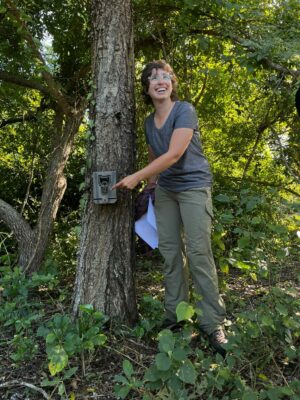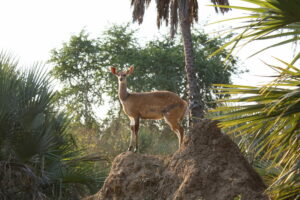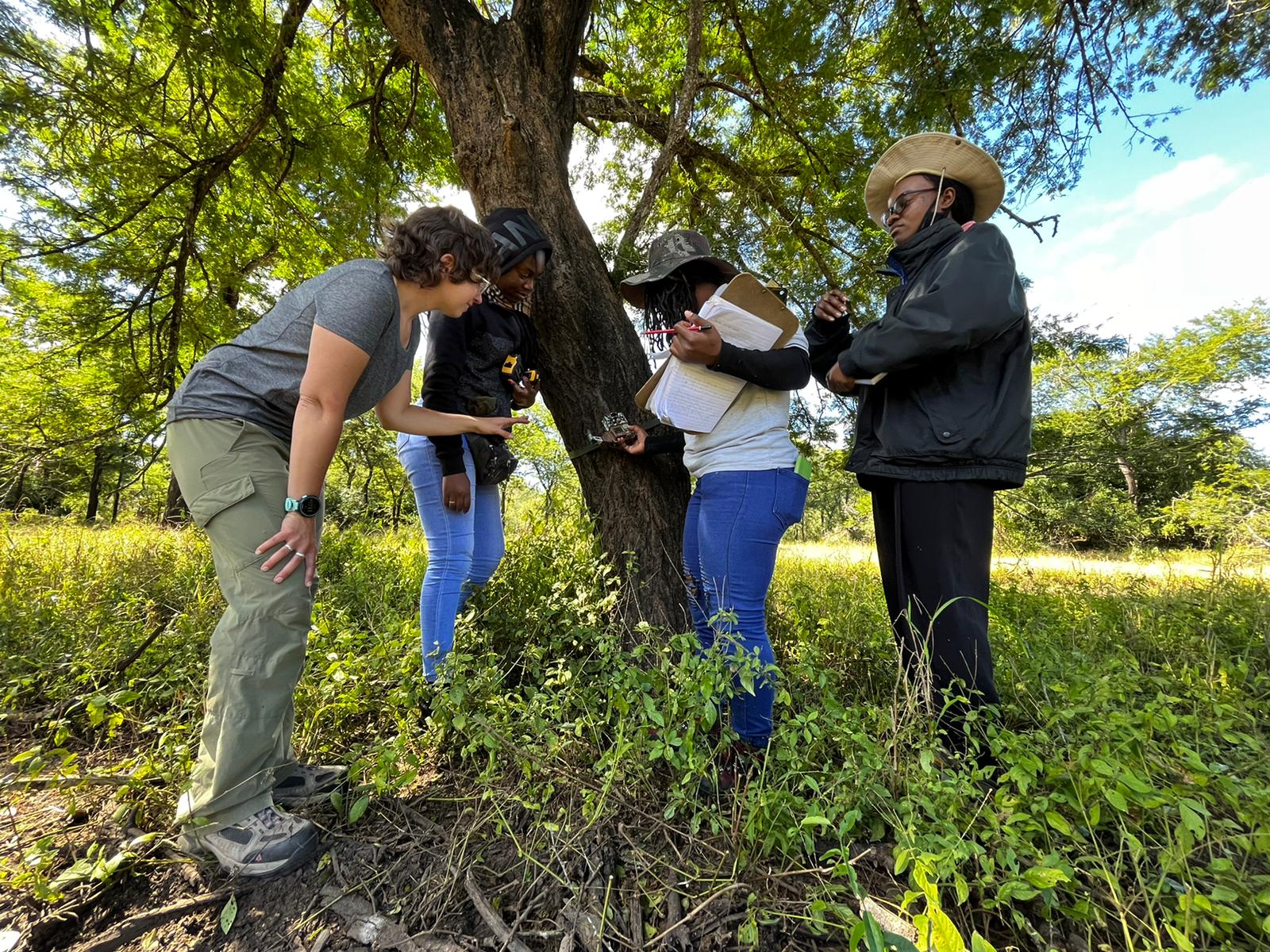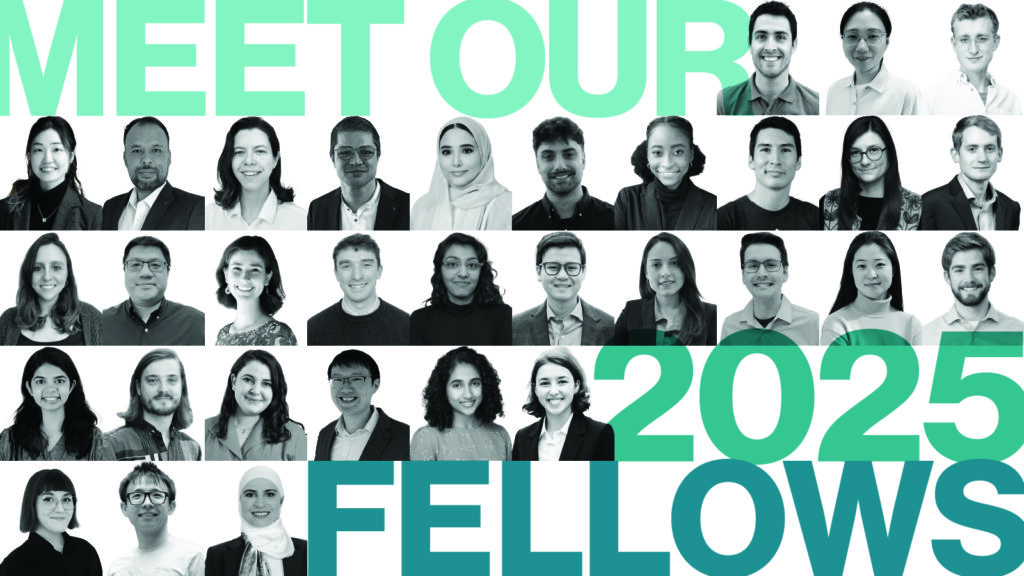Wild animals need a lot of space, and we are taking that away from them. How do they navigate a world where human disturbances are everywhere and natural habitats are shrinking? 2019 Schmidt Science Fellow Dr. Kaitlyn Gaynor is an ecologist-turned-data-scientist exploring how our presence is changing the behavior of large animals across the globe, from black bears to snow leopards.
As a child, Dr. Kaitlyn Gaynor was always interested in animals and why they do what they do. But it was watching monkeys brawling over juice cartons and chicken bones that first sparked her curiosity about how human presence changes the way wild animals behave.
“I spent a year living in Kenya and watching these monkeys in these habitats that look really different from those they evolved in. They were living in monoculture plantations at the edge of villages and fighting over garbage. The more I watched, the more I realized how much their behavior was shaped by humans,” she explains.

Kaitlyn’s work focuses on understanding how human disturbance shapes ecosystems, including its effects on animal behavior and interactions between different species. Sadly, humans are changing the natural world on all scales. Climate change. The spread of diseases. Deforestation. Over-exploitation of natural resources. Roads and fences slicing through habitats. The list is long.
By understanding what animals are doing in response to these disturbances, and why, researchers can better understand how to manage their behavior and find ways for people and animals to co-exist on our ever more crowded planet.
A landmark study led by Kaitlyn in 2018 reveals the remarkable lengths to which wild animals will go to avoid us. Her research pooled data from many studies across the world and discovered a widespread effect: that animals living close to people are becoming more nocturnal. This held true across species, continents and habitat types, from antelope in the Zimbabwean savanna to tapir in the Ecuadorian rainforests.
In Nepal, where tigers and humans share the same forest trails at different times, this strategy works well to reduce human-animal conflict. But for other species, this could have far-reaching consequences for whole ecosystems. For example, in the Californian mountains, coyotes disturbed by daytime hikers now eat rodents by night instead of squirrels and birds by day.
“That could potentially have impacts for the small mammal community: even though the small mammals aren’t directly responding to the hikers, their predators are,” explains Kaitlyn.
“We need to think about how we change our behavior and policies to minimize that impact on animals. Co-existence is a two-way street. We can’t expect animals to do all the work.”
An ecologist by training, Kaitlyn is now assistant professor in biodiversity data science, leading her own lab at the University of British Columbia. She’s come a long way from her field research days, tramping around in rubber boots, clutching a clipboard.
Today, she carries out bigger picture research. Her team uses GPS collars to track animals’ movements around the landscape and employs AI to classify and analyze thousands of images from camera traps, which take pictures of passing animals. By doing this, they can visualize the entire wildlife community of every animal species in both space and time.
Critical to this pivot into new research areas was Kaitlyn’s 2019 Schmidt Science Fellowship, which she says “really centers and values interdisciplinary collaboration.”
“As we increasingly turn to these tools like GPS collars, we all have to become data scientists in ecology. It’s not enough to sit there with your clipboard, you’ve got to actually process the data. You need a lot more technical skills in computing and statistical analysis.
“What the Schmidt Science Fellowship did was offer me some time to hone those skills and to develop those collaborations with data scientists and computer scientists, so that I could speak enough of their language to work with them. This helped me to extract information from my data, and then to do statistical analyses to extract meaning from that information.”
During her postdoc, Kaitlyn worked with collaborators to develop an AI algorithm to classify which species could be seen in camera trap photographs from Gorongosa National Park in Mozambique. Now, she’s heading up a major research project there.

Thanks to the skills gained during her Schmidt Science Fellowship, she has joined the new AI for Biodiversity Change (ABC) Global Climate Center, an international collaboration of ecologists, conservationists and computer scientists who are developing better ways to merge AI and ecology to understand how biodiversity is responding to global changes.
“It can be discouraging to work on conservation issues, because there’s a lot to be pessimistic about. But it’s really the people that I work with at my university and around the world that help me stay optimistic and excited,” she explains.
Conservation success stories like restoration of Gorongosa also give her reason to be cheerful.
“Every year I go back, I can see more and more animals and it gives me hope. And also where I live in North America, the default was, until recently, to just kill wild animals. Especially large carnivores, because they were dangerous and eating our livestock. But attitudes are changing, policies are changing, and there is now a desire to find solutions for co-existence. And that that gives me optimism.”
A version of this featured appeared in Rhodes Scholar 2024



